-
 Bitcoin
Bitcoin $108,489.6704
1.13% -
 Ethereum
Ethereum $2,502.0528
2.92% -
 Tether USDt
Tether USDt $1.0002
0.00% -
 XRP
XRP $2.1941
0.51% -
 BNB
BNB $655.3375
1.00% -
 Solana
Solana $151.5977
1.27% -
 USDC
USDC $0.9999
0.00% -
 TRON
TRON $0.2768
0.32% -
 Dogecoin
Dogecoin $0.1676
2.86% -
 Cardano
Cardano $0.5675
0.98% -
 Hyperliquid
Hyperliquid $40.6109
7.48% -
 Bitcoin Cash
Bitcoin Cash $500.7746
2.09% -
 Sui
Sui $2.8328
2.03% -
 Chainlink
Chainlink $13.4452
1.26% -
 UNUS SED LEO
UNUS SED LEO $9.1623
0.39% -
 Avalanche
Avalanche $18.2267
2.24% -
 Stellar
Stellar $0.2382
0.00% -
 Toncoin
Toncoin $2.8885
1.68% -
 Shiba Inu
Shiba Inu $0.0...01159
0.91% -
 Litecoin
Litecoin $87.1827
0.88% -
 Hedera
Hedera $0.1511
2.90% -
 Monero
Monero $315.4992
-0.59% -
 Polkadot
Polkadot $3.4663
2.34% -
 Bitget Token
Bitget Token $4.6118
-0.65% -
 Dai
Dai $1.0000
-0.01% -
 Ethena USDe
Ethena USDe $1.0003
0.02% -
 Uniswap
Uniswap $7.2989
4.69% -
 Pepe
Pepe $0.0...01003
5.73% -
 Aave
Aave $275.5616
7.15% -
 Pi
Pi $0.5181
-2.49%
Is the large volume pull-up at the end of the time-sharing chart a behavior of inducing more?
A large volume pull-up at the end of a crypto chart may signal manipulation, especially if it occurs repeatedly without fundamental cause.
Jun 30, 2025 at 05:56 pm
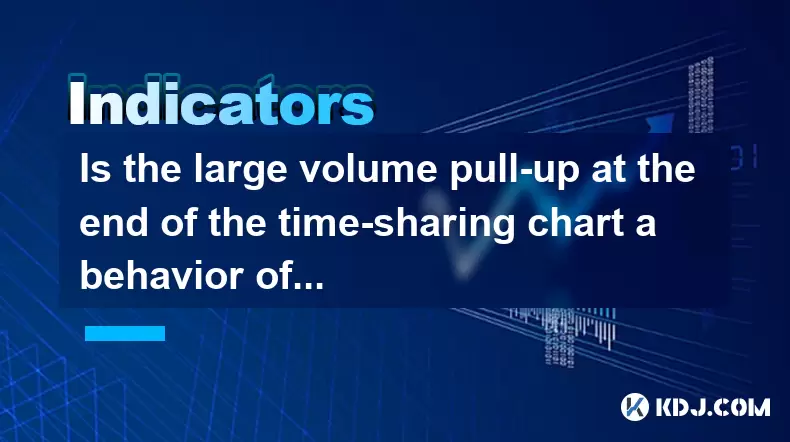
Understanding the Time-Sharing Chart in Cryptocurrency Trading
In the world of cryptocurrency trading, time-sharing charts are essential tools used by traders to analyze price movements within a specific timeframe. These charts typically display data in intervals such as 1-minute, 5-minute, or 15-minute segments, offering granular insights into how prices fluctuate throughout the day. The final moments of a time-sharing chart—especially on short intervals like 1-minute or 5-minute—are critical because they often reflect last-second actions by large players in the market.
A large volume pull-up at the end of a time-sharing chart can raise questions about the intentions behind such movement. Is it a genuine shift in demand, or is it an attempt to manipulate the market? To answer this, we must examine what constitutes volume spikes and how they are interpreted in the crypto space.
Large volume pull-ups refer to sudden increases in trading activity accompanied by a sharp rise in price just before the chart segment ends.
What Causes a Large Volume Pull-Up?
Several factors can lead to a large volume pull-up, especially near the close of a time-sharing chart:
- Algorithmic trading bots executing pre-set orders.
- Market makers adjusting positions or liquidity pools.
- Whales (large holders) making strategic trades to influence perception.
- News events breaking right before the chart closes.
- Exchange-specific anomalies, such as order book imbalances.
These causes aren't inherently manipulative. However, when a pull-up occurs repeatedly at the end of chart segments, patterns may suggest deliberate behavior rather than random fluctuations.
For instance, if a coin consistently sees a spike in volume and price in the last minute of every 5-minute chart without apparent fundamental reasons, it might indicate that someone is trying to create artificial momentum.
How to Analyze End-of-Chart Price Movements
To determine whether a large volume pull-up is manipulative or organic, traders use various analytical techniques:
Compare multiple timeframes: Look at the same asset across different chart intervals (e.g., 1-minute vs. 15-minute). If the upward movement only appears on shorter intervals but not on broader ones, it could be induced.
Check volume profiles: Use tools like Volume-by-Price indicators to see where most of the volume is concentrated. A sudden spike with no corresponding support level might point to manipulation.
Review trade logs: Some exchanges provide detailed trade histories that allow you to see who placed which orders and when. This helps identify whether the volume came from retail traders or large institutional accounts.
Analyze liquidity changes: Sudden shifts in bid-ask spreads or depth can signal aggressive buying or selling pressure that doesn’t align with normal market conditions.
If these analyses reveal consistent, unexplained behavior at the end of chart intervals, it supports the idea that the pull-up was induced.
Recognizing Induced Behavior in Crypto Markets
The concept of inducing more participants refers to strategies where certain actors attempt to create the illusion of strength or weakness in a cryptocurrency’s price to attract other traders. In traditional markets, this is sometimes called "painting the tape" or "spoofing." In crypto, similar behaviors exist, albeit under different names and mechanisms.
Signs of induced behavior include:
- Repeated spikes at predictable intervals.
- Lack of correlation with news or macroeconomic events.
- High volume but little follow-through in the next chart segment.
- Appearance of wash trading (self-matching orders to inflate volume).
Some traders look for reversal candles after large pull-ups. For example, if a candlestick shows a strong upward move but closes near its opening price, it suggests that the rally was not sustained—potentially a sign of manipulation.
Technical Tools to Detect Market Manipulation
There are several technical tools available to detect suspicious activities like induced volume pull-ups:
Order Book Depth Analysis: Monitoring real-time changes in the order book can help identify fake liquidity or sudden removal of large orders.
On-Balance Volume (OBV): This indicator tracks cumulative volume flows. If OBV doesn’t confirm a price increase, it may mean the rally isn’t supported by real buying interest.
Volume Spread Analysis (VSA): VSA looks at the relationship between volume, range, and spread to assess whether smart money is involved.
Smart Money Concepts (SMC): Traders following SMC principles watch for signs of institutional activity, such as retests of key levels or absorption of selling pressure.
Using these tools together can provide a clearer picture of whether a large volume pull-up was natural or artificially created to entice more traders into the market.
Frequently Asked Questions
Q1: Can I always trust high-volume spikes at the end of a chart interval?
No. While some spikes are legitimate, others may be manipulated. Always cross-reference with other timeframes and volume metrics before making decisions.
Q2: How do whales benefit from inducing volume pull-ups?
Whales can trigger stop-losses, trap retail traders, or create false breakouts to profit from subsequent reversals. They may also accumulate or distribute positions quietly during induced volatility.
Q3: Are there exchanges that are more prone to induced volume behavior?
Smaller exchanges with less liquidity and lower regulatory oversight are more susceptible to such behavior. Major platforms with robust surveillance systems tend to have fewer incidents.
Q4: What steps can retail traders take to avoid falling for induced moves?
Use multi-timeframe analysis, verify volume authenticity through tools like OBV, and avoid placing trades solely based on late-chart momentum without confirmation.
Disclaimer:info@kdj.com
The information provided is not trading advice. kdj.com does not assume any responsibility for any investments made based on the information provided in this article. Cryptocurrencies are highly volatile and it is highly recommended that you invest with caution after thorough research!
If you believe that the content used on this website infringes your copyright, please contact us immediately (info@kdj.com) and we will delete it promptly.
- Unlock Crypto Riches: Mining Platforms & Starter Bonuses - Your Gateway to Digital Gold!
- 2025-06-30 22:30:11
- Dogecoin, Cloud Mining, and Risk Alerts: Navigating the Meme Minefield
- 2025-06-30 22:30:11
- XRPL EVM Sidechain Mainnet: Smart Contracts Unleashed!
- 2025-06-30 22:35:12
- Emmerdale's Dog Attack Storyline: A Bite of Reality
- 2025-06-30 22:40:11
- Retail Investors, Degen Labs, and ICOs: A New Era of Meme Coin Mania?
- 2025-06-30 22:45:12
- Rekt, Ovie Faruq, and the Movement: How a Crypto Meme Became a Consumer Brand
- 2025-06-30 21:10:14
Related knowledge
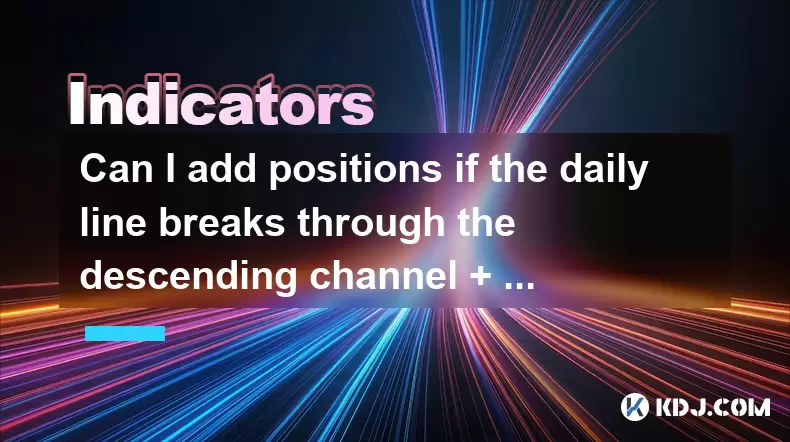
Can I add positions if the daily line breaks through the descending channel + the 30-minute moving average is in a bullish arrangement?
Jun 30,2025 at 11:00pm
Understanding the Descending Channel BreakoutWhen a daily line breaks through a descending channel, it indicates a potential shift in market sentiment from bearish to bullish. A descending channel is formed by drawing two parallel trendlines, where the upper trendline connects the lower highs and the lower trendline connects the lower lows. A breakout o...
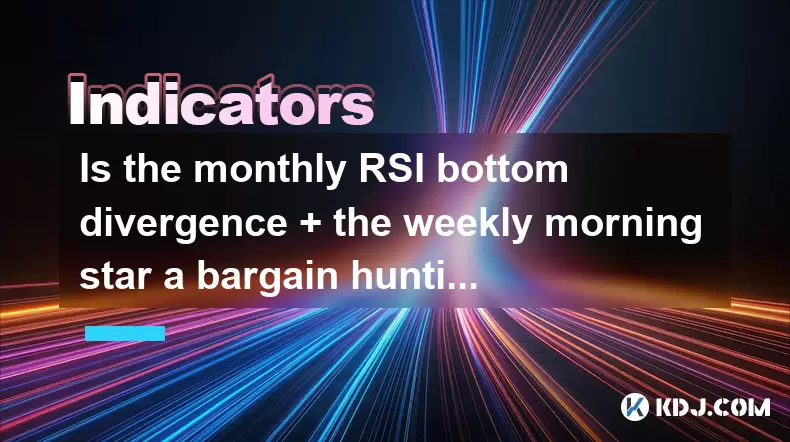
Is the monthly RSI bottom divergence + the weekly morning star a bargain hunting opportunity?
Jun 30,2025 at 09:57pm
Understanding RSI Bottom Divergence in Monthly TimeframesThe Relative Strength Index (RSI) is a momentum oscillator commonly used to identify overbought or oversold conditions in the market. When traders refer to a monthly RSI bottom divergence, they're observing a situation where the price makes a lower low, but the RSI makes a higher low on the monthl...
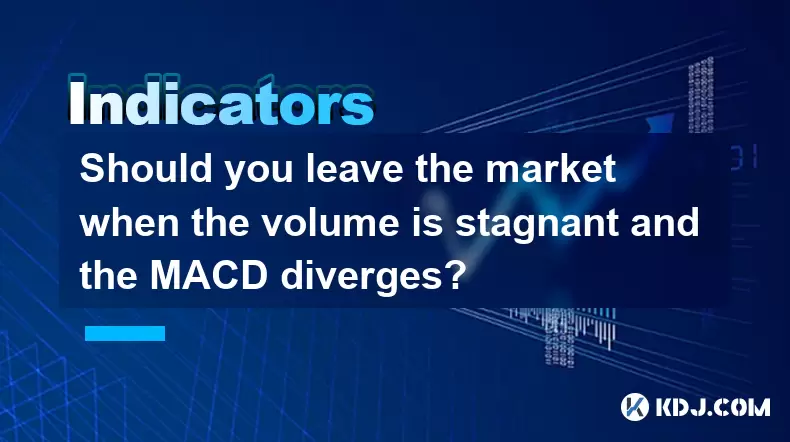
Should you leave the market when the volume is stagnant and the MACD diverges?
Jun 30,2025 at 09:36pm
Understanding Volume Stagnation in Cryptocurrency TradingIn the realm of cryptocurrency trading, volume plays a crucial role in determining the strength of price movements. When volume remains stagnant over an extended period, it suggests that neither buyers nor sellers are showing strong conviction. This often leads to sideways movement or consolidatio...
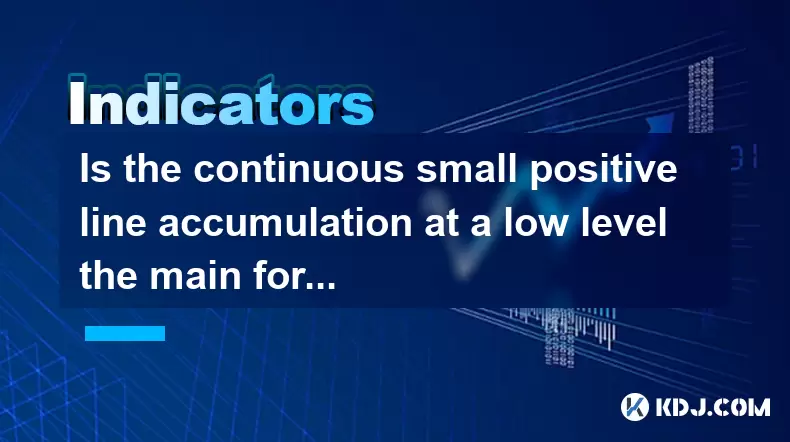
Is the continuous small positive line accumulation at a low level the main force to build a position?
Jun 30,2025 at 08:15pm
Understanding the Concept of Continuous Small Positive Line AccumulationIn cryptocurrency trading, continuous small positive line accumulation refers to a pattern where an asset experiences multiple consecutive candlesticks or bars that close higher than they open, but with relatively low volume and minimal price movement. This phenomenon is often obser...
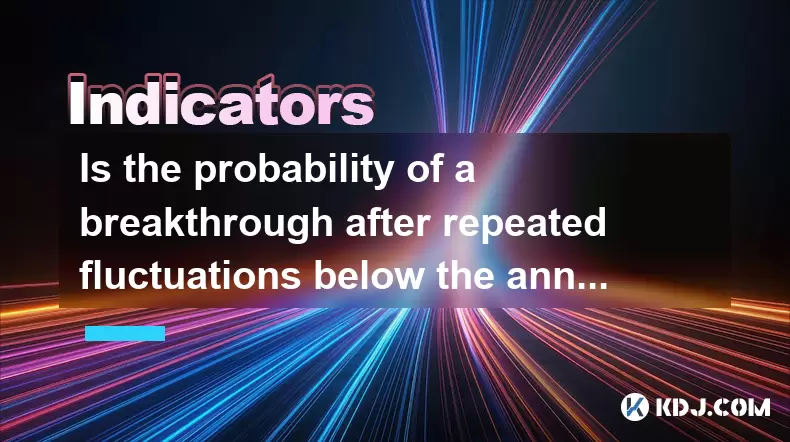
Is the probability of a breakthrough after repeated fluctuations below the annual line high?
Jun 30,2025 at 10:15pm
Understanding the Annual Line in Cryptocurrency TradingIn cryptocurrency trading, the annual line, also known as the 365-day moving average, is a critical technical indicator used by traders to assess long-term trends. This line serves as a dynamic support or resistance level depending on the price action around it. When the price of a cryptocurrency re...
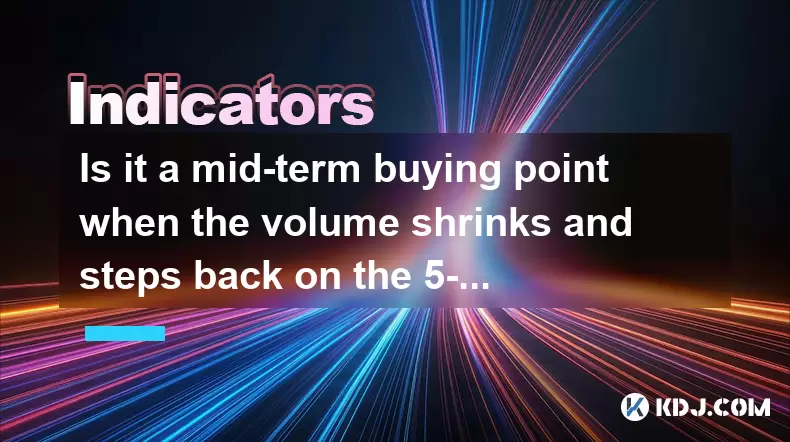
Is it a mid-term buying point when the volume shrinks and steps back on the 5-week line in the upward trend?
Jun 30,2025 at 07:49pm
Understanding the 5-Week Moving Average in Cryptocurrency TradingIn cryptocurrency trading, technical indicators such as the 5-week moving average are widely used to assess long-term trends. This indicator smooths out price volatility over a five-week period and provides traders with a clearer picture of the direction in which an asset is moving. When a...

Can I add positions if the daily line breaks through the descending channel + the 30-minute moving average is in a bullish arrangement?
Jun 30,2025 at 11:00pm
Understanding the Descending Channel BreakoutWhen a daily line breaks through a descending channel, it indicates a potential shift in market sentiment from bearish to bullish. A descending channel is formed by drawing two parallel trendlines, where the upper trendline connects the lower highs and the lower trendline connects the lower lows. A breakout o...

Is the monthly RSI bottom divergence + the weekly morning star a bargain hunting opportunity?
Jun 30,2025 at 09:57pm
Understanding RSI Bottom Divergence in Monthly TimeframesThe Relative Strength Index (RSI) is a momentum oscillator commonly used to identify overbought or oversold conditions in the market. When traders refer to a monthly RSI bottom divergence, they're observing a situation where the price makes a lower low, but the RSI makes a higher low on the monthl...

Should you leave the market when the volume is stagnant and the MACD diverges?
Jun 30,2025 at 09:36pm
Understanding Volume Stagnation in Cryptocurrency TradingIn the realm of cryptocurrency trading, volume plays a crucial role in determining the strength of price movements. When volume remains stagnant over an extended period, it suggests that neither buyers nor sellers are showing strong conviction. This often leads to sideways movement or consolidatio...

Is the continuous small positive line accumulation at a low level the main force to build a position?
Jun 30,2025 at 08:15pm
Understanding the Concept of Continuous Small Positive Line AccumulationIn cryptocurrency trading, continuous small positive line accumulation refers to a pattern where an asset experiences multiple consecutive candlesticks or bars that close higher than they open, but with relatively low volume and minimal price movement. This phenomenon is often obser...

Is the probability of a breakthrough after repeated fluctuations below the annual line high?
Jun 30,2025 at 10:15pm
Understanding the Annual Line in Cryptocurrency TradingIn cryptocurrency trading, the annual line, also known as the 365-day moving average, is a critical technical indicator used by traders to assess long-term trends. This line serves as a dynamic support or resistance level depending on the price action around it. When the price of a cryptocurrency re...

Is it a mid-term buying point when the volume shrinks and steps back on the 5-week line in the upward trend?
Jun 30,2025 at 07:49pm
Understanding the 5-Week Moving Average in Cryptocurrency TradingIn cryptocurrency trading, technical indicators such as the 5-week moving average are widely used to assess long-term trends. This indicator smooths out price volatility over a five-week period and provides traders with a clearer picture of the direction in which an asset is moving. When a...
See all articles

























































































